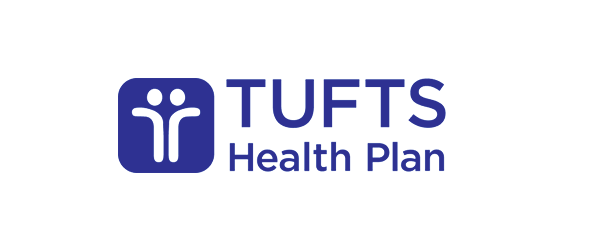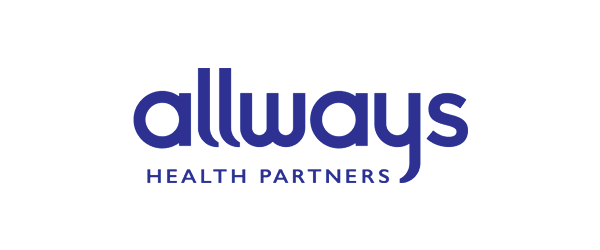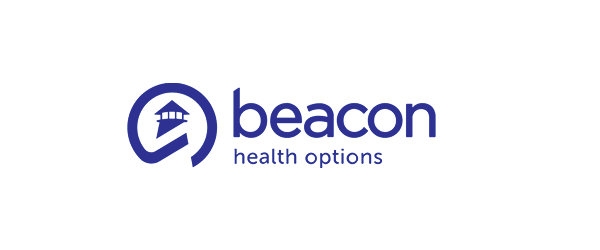Home | Drug Addiction
Drug Addiction
Drug addiction is a condition that impairs the brain and behavior, leading to an uncontrollable urge to use various substances. This complex disorder often starts with experimental use in social settings and can escalate to a life-consuming struggle, affecting every aspect of one’s life.
Drug addiction is a complex and chronic brain condition characterized by compulsive drug-seeking behavior. It is also marked by an inability to control or stop drug use despite negative consequences. It is a disease that affects the brain, leading to changes in the brain’s structure and function.1 Drug addiction can involve the use of various substances. This includes illicit drugs like cocaine, heroin, methamphetamine, and marijuana. It also includes legal substances such as prescription medications and alcohol.
Jump to Section
What is Drug Addiction?
Addiction is a chronic disease characterized by a compelling need for drug seeking and usage, which becomes increasingly difficult to control despite its harmful consequences. For many, the journey into drug use starts as a voluntary choice, but as addiction takes hold, it can lead to significant changes in the brain. These changes challenge the individual’s self-control and weaken their ability to resist intense drug cravings. Drug addiction is often described as a “relapsing” disease because those in recovery from drug use disorders face a heightened risk of returning to drug use, even after long periods of abstinence.1
Relapse is not uncommon and does not mean that treatment has failed. Like other chronic health conditions, managing addiction requires ongoing treatment and adjustments tailored to how the patient responds. Treatment plans should be regularly reviewed and modified to suit the patient’s evolving needs, ensuring the best approach for sustained recovery.1
What Are The Causes of Drug Addiction?
People turn to drugs for many reasons. Often, the initial decision to use drugs is driven by a desire to feel good, alleviate discomfort, enhance academic or professional performance, satisfy curiosity, or conform to peer pressure, particularly among teenagers.1 This initial experimentation can quickly evolve into a cycle of addiction due to the way drugs interact with the brain.
Drugs work by stimulating the parts of the brain that produce feelings of pleasure. However, with repeated use, these feel-good areas of the brain adapt and become less responsive, leading to a need for increasing amounts of the drug to achieve the same level of pleasure or even to feel normal. This phenomenon is a key factor in the development of drug addiction.1
The impact of drugs on the brain’s reward circuit plays a crucial role in addiction. Most drugs trigger a flood of dopamine, a neurotransmitter that is associated with pleasure and satisfaction, in the brain’s reward circuit.2 This excessive dopamine release reinforces the behavior of drug use, making the person want to repeat it.2
As drug use continues, the brain undergoes significant changes. The cells in the reward circuit become less sensitive to dopamine, reducing the user’s ability to feel pleasure from the drug as well as from everyday activities they once enjoyed, like eating or socializing. This reduced sensitivity is known as tolerance.2 The pursuit of the drug-induced high becomes a driving force in the lives of people with addiction, often at the expense of other activities and responsibilities.
Moreover, prolonged drug use affects other critical brain functions, altering systems and circuits related to learning, judgment, decision-making, stress, memory, and behavior.2 These changes can have profound effects on an individual’s personality and actions, further complicating the cycle of addiction.
Despite understanding the harmful consequences, many individuals continue to use drugs. This persistent use, even in the face of negative health, social, and legal repercussions, highlights the complex nature of addiction. Both the physical dependency and the psychological compulsion to use drugs make overcoming addiction a challenging process.1,2
Request a Confidential Call
Take the First Step Toward Recovery.
If you or someone you know is struggling with addiction, we encourage you to request a confidential call. At Rockland Treatment Center, we understand the sensitivity and complexity of your situation and are here to offer you a space to explore treatment options, ask questions, and receive support from experienced professionals. Taking this first step can be challenging, but it’s a courageous and significant move towards a healthier, more fulfilling life.
"*" indicates required fields
What Are The Stages of Addiction?
Stage 1: Initial Use
The journey towards addiction often starts with the first use, which can occur for various reasons. It might be a prescription for managing pain, a cultural rite of passage like a first alcoholic drink, or peer pressure to try illicit drugs. This stage is crucial as it sets the path towards potential addiction, influenced by factors such as family history of substance abuse, personal or environmental stressors, and mental health issues.
Stage 2: Abuse
Abuse marks the stage where substance use becomes harmful. This could manifest as taking higher doses of prescription medication than prescribed, engaging in binge drinking, or using illicit drugs. The definition of abuse varies depending on the substance, but it generally refers to using a substance for its euphoric effects rather than for medical or social purposes.
Stage 3: Tolerance
As substance use continues, the body starts adapting to its presence, leading to tolerance. This means the same amount of substance no longer produces the same effect, prompting an increase in dosage or frequency. Tolerance is a clear sign of the brain’s adaptation to the drug and a step towards more severe substance abuse.
Stage 4: Dependence
Dependence occurs when the body or brain starts relying on the substance to function normally. For example, long-term cocaine or methamphetamine users may find it impossible to experience pleasure without the drug. It’s important to note that dependence can be physiological without being addictive, as in the case of necessary prescription medications for chronic conditions.
Stage 5: Addiction
Addiction is a chronic mental health disorder with specific symptoms and behaviors. It’s characterized by an inability to stop using the substance despite knowing its harmful effects, neglecting responsibilities, and experiencing withdrawal symptoms when not using the drug. The severity of addiction can vary, but it generally involves a pattern of compulsive substance use.
Stage 6: Relapse
Relapse is a common part of chronic conditions, including addiction. It doesn’t indicate failure but rather the need for adjusted or renewed treatment efforts. Relapse rates for addiction are similar to those for other chronic diseases like diabetes or asthma, emphasizing the need for ongoing management.

Recognizing addiction as a chronic condition opens the door to effective treatment. Just as chronic diseases like asthma or diabetes are managed through ongoing treatment, addiction can be managed with a combination of therapies, support groups, and lifestyle changes. Professional treatment can help individuals break the cycle of addiction and move toward sustained recovery.
What Are The Signs and Symptoms of Drug Addiction?
Addiction can occur at any age, but it typically begins in youth, stemming from changes in the brain due to drug use. This condition affects an individual’s thinking and behavior.4 Understanding the signs of addiction is crucial, as it can affect anyone, regardless of background, appearance, or financial status.4
A key sign of addiction is the continued use of drugs despite the negative impact on one’s physical health, academic or work performance, and personal relationships. Individuals often feel powerless to stop using drugs, regardless of the consequences.4
Additional signs of addiction include:4
- Changing social groups
- Not caring about personal appearance
- Experiencing a drop in school performance, missing classes, or frequently skipping school
Loss of interest in previously enjoyed activities - Facing disciplinary issues at school or with legal authorities
- Experiencing changes in eating or sleeping patterns
- Increasing conflicts with family members and friends
Recognizing the signs and symptoms of drug addiction is essential for identifying when someone may be struggling with substance abuse. Addiction treatment centers like Rockland Recovery offer comprehensive care for those dealing with substance use disorders, providing support throughout the recovery journey.
We accept most insurance plans
What Factors Increase The Risk of Addiction?
The risk of addiction is influenced by a combination of biological and environmental factors, each playing a significant role in increasing an individual’s susceptibility to substance use disorders:5
Biological Factors
- Genetics: A person’s genetic makeup is a major factor, accounting for about 40 to 60 percent of their risk for addiction. This includes not only inherited genes but also how environmental factors affect gene expression, known as epigenetics.
- Developmental Stage: Adolescents and young adults are at a higher risk, partly due to the vulnerability of their developing brains.
- Mental Health Disorders: Individuals with mental health issues, such as depression or anxiety, are more likely to use drugs and develop addiction.
- Gender and Ethnicity: These can also influence the likelihood of developing an addiction, although the reasons for these differences can be complex and multifaceted.
Environmental Factors
- Family and Home Environment: Exposure to drug use, alcohol misuse, or criminal behavior within the family increases the risk of future drug problems.
- Peer Influence: Especially during teenage years, peers play a significant role. Teens are more likely to try drugs if their friends are also using.
- Academic and Social Challenges: Struggling in school or having poor social skills can heighten the risk of drug use and addiction.
Other Contributing Factors
- Early Drug Use: Starting drug use at a young age can lead to more serious problems. The developing brain is more susceptible to the harmful effects of drugs, making early use a strong predictor of future addiction.
- Method of Drug Use: The way a drug is consumed affects its addictive potential. Smoking or injecting drugs can produce a rapid and intense high, increasing the likelihood of repeated use to recapture this sensation.
In addition to these factors, it’s important to consider the complex interplay between them. For example, a person with a genetic predisposition to addiction might never develop a substance use disorder unless they encounter certain environmental triggers. Conversely, someone with many environmental risk factors might not develop an addiction if they do not have the genetic makeup that predisposes them to it. Understanding these risk factors is crucial in developing effective prevention and treatment strategies for addiction. It highlights the need for a comprehensive approach that considers the whole individual, their genetic makeup, life experiences, and current environment.
Can Drug Addiction Be Treated?
Individuals recovering from addiction often face the risk of relapse for many years or even throughout their lifetime. The most effective approach to treatment combines medication with behavioral therapy, addressing not just the addiction itself but also any co-occurring medical, mental, and social issues. Tailoring these treatments to each patient’s specific drug use patterns and problems can lead to sustained recovery.1
Prevention is also a key component in the fight against drug addiction. Research by the National Institute on Drug Abuse (NIDA) has shown that prevention programs involving families, schools, communities, and the media can be effective in reducing or preventing drug use and addiction. Education plays a crucial role in prevention, as understanding the risks associated with drug use can significantly reduce the incidence of addiction. Teachers, parents, and healthcare providers are instrumental in this educational effort.1
For those who are already struggling with addiction, treatment is a viable path to recovery. Sticking with a treatment program can lead to cessation of drug use and significant life changes that support a drug-free lifestyle. Recovery involves more than just stopping drug use; it requires learning new ways of thinking, feeling, and dealing with problems.2
Post-treatment, individuals face the challenge of rebuilding their lives without drugs. This includes repairing relationships, addressing financial or job-related issues, and avoiding previous drug-using acquaintances and environments. Recognizing and managing triggers that lead to drug use is also crucial. Additionally, treatment for underlying mental health issues such as depression or anxiety may be necessary.2
Get fast answers to your questions
What Does Drug Addiction Treatment Look Like?
The treatment of substance use disorders is multifaceted and must be tailored to the individual. Evidence-based guidelines assist healthcare professionals in choosing appropriate treatment options based on a patient’s specific needs and circumstances. Treatment can vary depending on the type of SUD and may include medications for opioid use disorder, inpatient rehab, outpatient treatment, and behavioral health care.3
Effective treatment addresses all aspects of the patient’s life, not just their drug use. This includes treating any co-occurring mental health disorders and testing for infectious diseases like HIV/AIDS, hepatitis, and tuberculosis, along with education on reducing infection risks.3
Medication-Assisted Treatment (MAT)
Medication-assisted treatment combines medications with counseling and behavioral therapies to treat substance use disorders. This approach is primarily used for alcohol addiction and addiction to opioids, including heroin and prescription drugs. MAT medications can reduce withdrawal symptoms and cravings, helping to normalize body functions without the negative effects of the abused substance. When combined with counseling and behavioral therapies, MAT is often highly effective in decreasing substance use and improving patient survival and retention in treatment.
Inpatient Rehab
Inpatient rehab, also known as residential treatment, involves patients living in a treatment facility while undergoing intensive treatment for substance use disorders. These programs can last from a few weeks to several months and typically include a combination of individual and group therapy, educational sessions, and sometimes holistic therapies. The immersive nature of inpatient rehab helps patients focus entirely on their recovery, away from everyday stressors and triggers. It’s particularly beneficial for those with severe addictions or co-occurring mental health disorders.
Outpatient Treatment
Outpatient treatment programs allow individuals to live at home while receiving treatment for substance use disorders. These programs can vary in intensity and duration, typically involving regular sessions of counseling, group therapy, and education about substance abuse. Outpatient treatment is often suitable for those with less severe addictions or as a step-down level of care following inpatient treatment. It allows individuals to maintain their daily responsibilities, like work or school, while receiving ongoing support.
Behavioral Health Care
Behavioral health care in addiction treatment involves various therapeutic approaches to address the behavioral aspects of substance abuse. This includes therapies like cognitive behavioral therapy (CBT), dialectical behavior therapy (DBT), and motivational interviewing. These therapies help individuals understand the root causes of their addiction, develop coping strategies, and make positive behavioral changes. Behavioral health care is a critical component of both inpatient and outpatient treatment programs.
Co-Occurring Mental Health Treatment
Many individuals with substance use disorders also suffer from co-occurring mental health conditions, such as depression, anxiety, or bipolar disorder. Co-occurring mental health treatment addresses both the substance use disorder and the mental health condition simultaneously. This integrated approach is crucial because untreated mental health issues can often contribute to substance abuse and vice versa. Treatment typically involves a combination of medication, counseling, and support groups tailored to address both conditions effectively.
Contact Rockland Recovery Treatment Centers
GET THE SUPPORT YOU NEED
Rockland Recovery is a leader in addiction treatment and mental health care. Our multidisciplinary team of top medical experts is committed to addressing the unique needs of each patient. Reach out to us anytime – we are available 24/7.
For additional information or to find addiction treatment and mental health services in your area, contact us directly or visit SAMSHA’s treatment locator. For immediate assistance, call or text 988 to reach the National Suicide & Crisis Lifeline or 855.732.4842 to speak to a Care Coordinator at Rockland Recovery.
View Article References
1. National Institute on Drug Abuse. (2018). Understanding drug use and addiction.
2. National Institute on Drug Abuse. (2022). The Science of Drug Use: A Resource for the Justice Sector
3. Centers for Disease Control and Prevention. (2023). Recovery is possible: Treatment for substance use disorders.
4. National Institute on Drug Abuse. (2021). What Are the Signs of Having a Problem With Drugs?
5. National Institute on Drug Abuse. (2020). Drugs, Brains, and Behavior: The Science of Addiction.

Medically Reviewed by Kate Perfetti, LADC II
Search
Addiction Treatment Programs
Request a confidential call
"*" indicates required fields
Addiction Treatment Programs Massachusetts
Our comprehensive substance abuse treatment services are designed not just to treat the symptoms of addiction but to address the underlying causes, fostering deep, lasting healing and personal growth.





